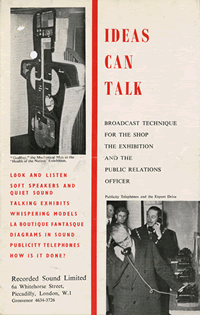Diary of the Archives Hub, June 2011

This is the first of our monthly diary entries, where we share news, ideas and thoughts about the Archives Hub and the wider world. This diary is aimed primarily at archives that contribute to the Hub, or are thinking about contributing, but we hope that it provides useful information for others about the sorts of developments going on at the Hub and how we are working to promote archives to researchers.
Hub Contributors’ Forum
At the Hub we are always looking to maintain an active and constructive relationship with our contributors. Our Contributors’ Forum provides one way to do this. It is informal, friendly, and just meets once or twice a year to give us a chance to talk directly to archivists. We think that archivists also value the opportunity to meet other contributors and think about issues around data discovery.
We have a Contributors’ Forum on 7th July at the University of Manchester and if any contributors out there would like to come we’d love to see you. It is a chance to think about where the Hub is going and to have input into what you think we should be doing, where our priorities should lie and how to make the service effective for users. Just in case you all jump in at once, we do have a limit on numbers….but please do get in touch if you are interested.
The session will be from 10.30 to 1.00 at the University of Manchester with lunch provided. It will be with some members of the Hub Steering Committee, so a chance for all to mix and mingle and get to know each other. And for you to talk to Steering Committee members directly.
Please email Lisa if you would like to attend: lisa.jeskins@manchester.ac.uk.
Contributor Audio Tutorials
Our audio tutorial is aimed at contributors who need some help with creating descriptions for the Hub. It takes you through the use of our EAD Editor, step-by-step. It is also useful in a general sense for creating archival descriptions, as it follows the principles of ISAD(G). The tutorial can be found at http://archiveshub.ac.uk/tutorials/. It is just a simple audio tutorial, split into convenient short modules, covering basic collection-level descriptions through to multi-level and indexing. Any feedback greatly appreciated – if you want any changes or more units added, just let us know.
Archives Hub Feature: 100 Objects
We are very pleased with our monthly features, founded by Paddy, now ably run by Lisa. They are a chance to show the wealth of archive collections and provide all contributors the opportunity to showcase their holdings. They do quite well on Google searches as well!
Our monthly feature for June comes from Bradford Special Collections, one of our stalwart contributors, highlighting their current online exhibition: 100 Objects. Some lovely images, including my favourite, ‘Is this man an anarchist?’ (No!! he’s just trying to look after his family): http://archiveshub.ac.uk/features/100objects/Nationalunionofrailwaymenposter.html
Relevance Ranking
Relevance ranking is a tricky beast, as our developer, John, will attest. How to rank the results of a search in a way that users see as meaningful? Especially with archive descriptions, which range from a short description of a 100 box archive to a 10 page description of a 2 box archive!
John has recently worked on the algorithm used for relevance ranking so that results now look more as most users would expect. For example, if you searched for ‘Sir John Franklin’ before, the ‘Sir John Franklin archive’ would not come up near the top of the results. It now appears 1st in results rather than way down the list, as it was previously. Result.
Images
Since last year we have provided the ability to add images to Hub descriptions. The images have to be stored elsewhere, but we will embed them into descriptions at any level (e.g. you can have an image to represent a whole collection, or an image at each item level description).
We’ve recently got some great images from the Design Council Archive: http://archiveshub.ac.uk/data/gb1837des-dca – take a look at the Festival of Britain entries, which have ‘digital objects’ linked at item level, enabling researchers to get a great idea of what this splendid archive holds.
Any contributors wishing to add images, or simple links to digital content, can easily do so through using the EAD Editor: http://archiveshub.ac.uk/images/ You can also add links to documents and audio files. Let us know if you would like more information on this.
Linking to descriptions
Linking to Hub descriptions from elsewhere has become simpler, thanks to our use of ‘cool URIs’. See http://archiveshub.ac.uk/linkingtodescriptions/. You simply need to use the basic URI for the Hub, with the /data/ directory, e.g. http://archiveshub.ac.uk/data/gb029ms207.
Out and About
It would take up too much space to tell you about all of our wanderings, but recently Jane spent a very productive week in Prague at the European Libraries Automation Group (ELAG), a very friendly bunch of people, a good mix of librarians and developers, and a very useful conference centering on Linked Data.
Bethan is at the CILIP new professionals information day today, busy twittering about networking and sharing knowledge.
Lisa is organising our contributors’ workshops for this year (feels like our summer season of workshops) and has already run one in Manchester. More to follow in Glasgow, London and Cardiff. This is our first workshop in Wales, so please take advantage of this opportunity if you are in Wales or south west England. More information at http://archiveshub.ac.uk/contributortraining/
Joy is very busy with the exciting initiative, UKDiscovery. This is about promoting an open data agenda for archives, museums and libraries – something that we know you are all interested in. Take a look at the new website: http://discovery.ac.uk/.
With best wishes,
The Hub Team



